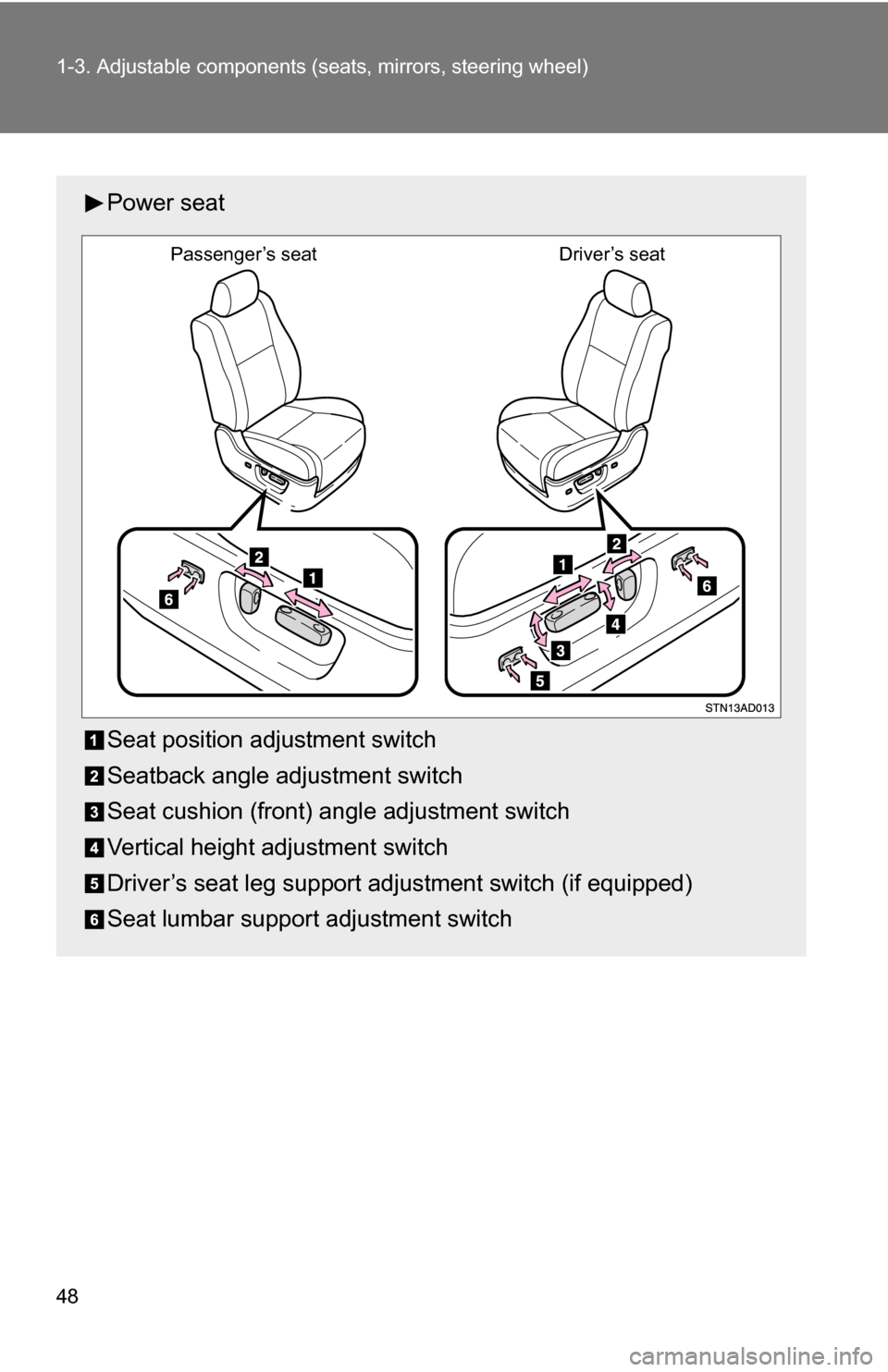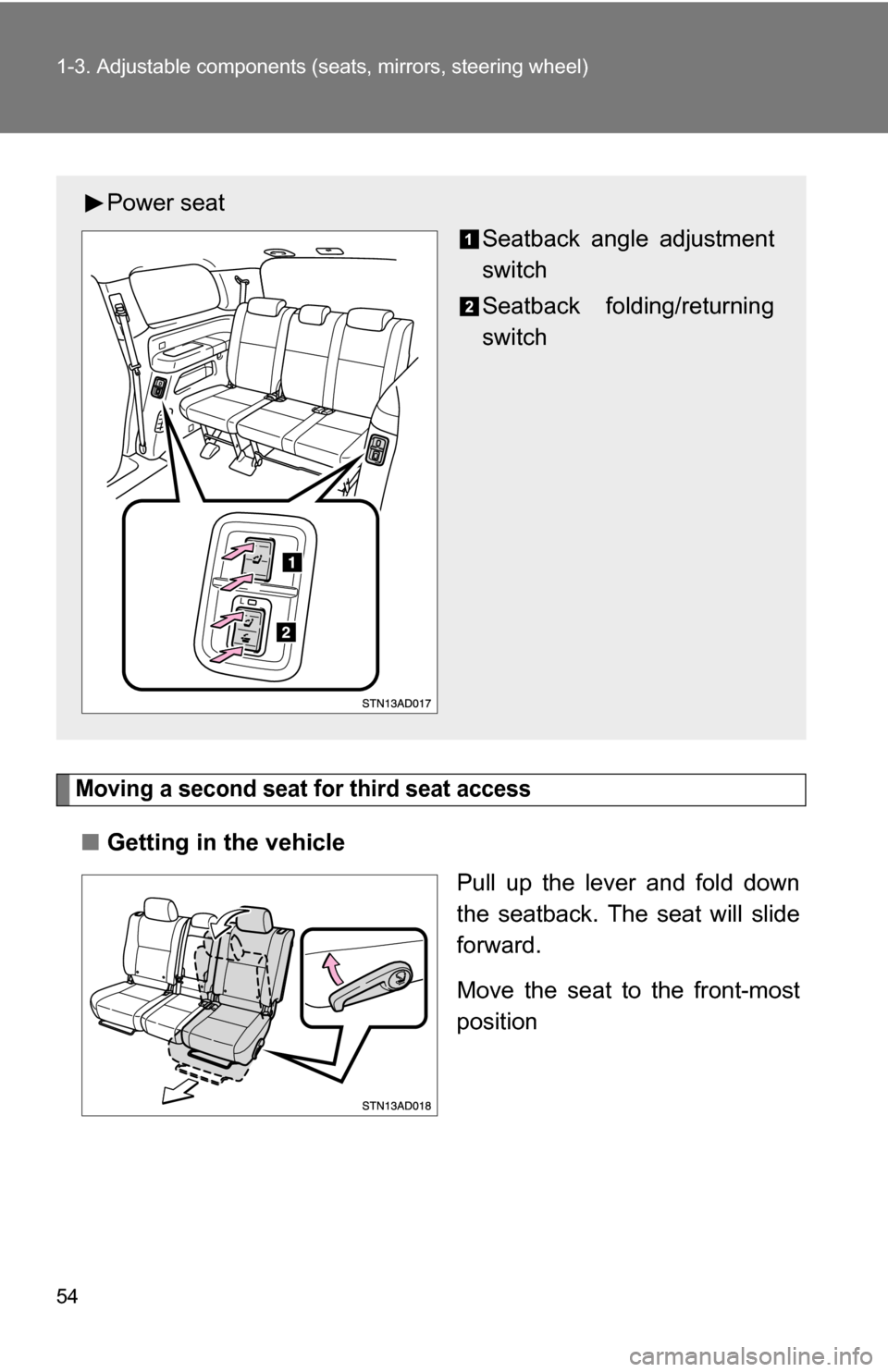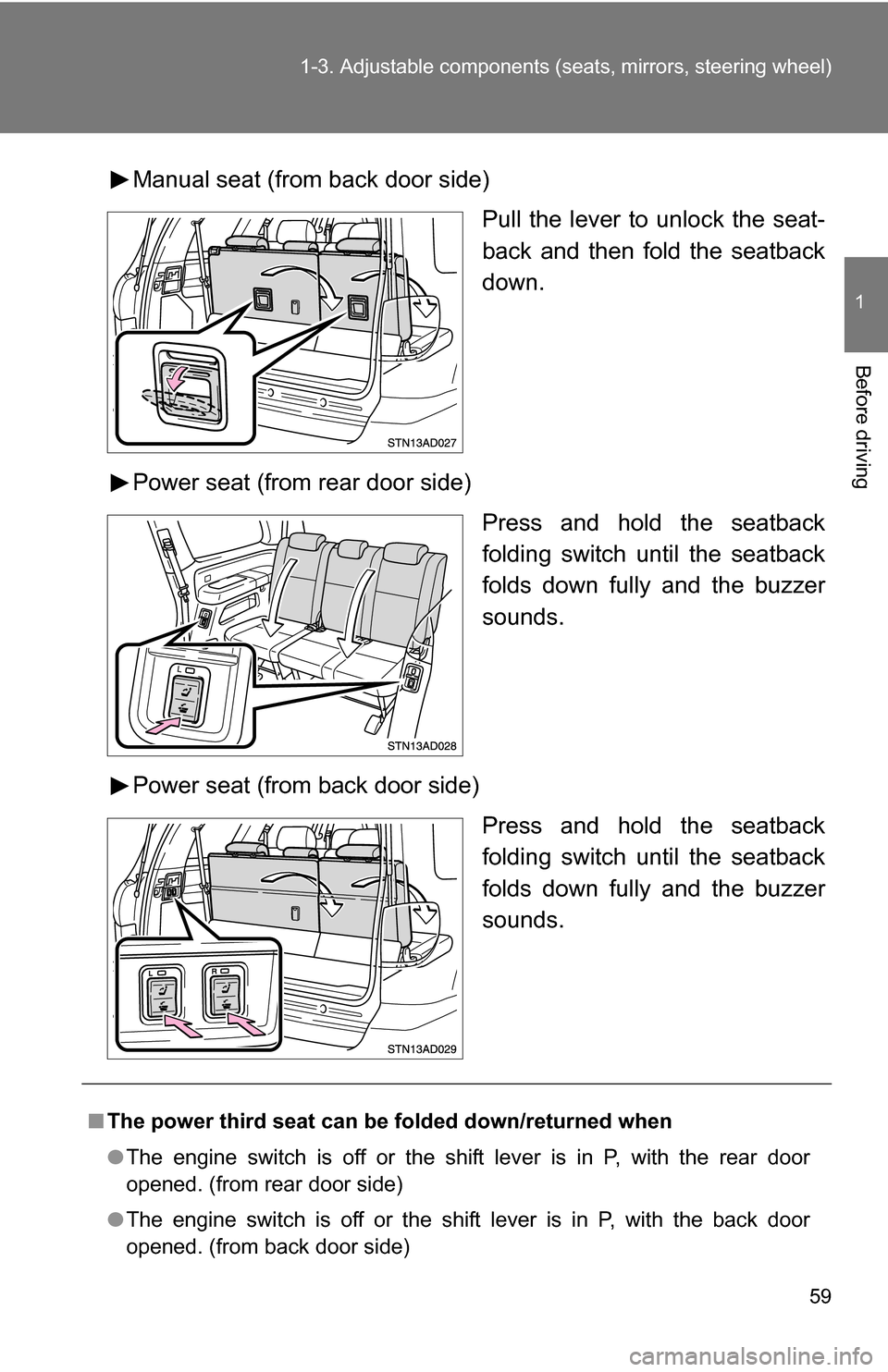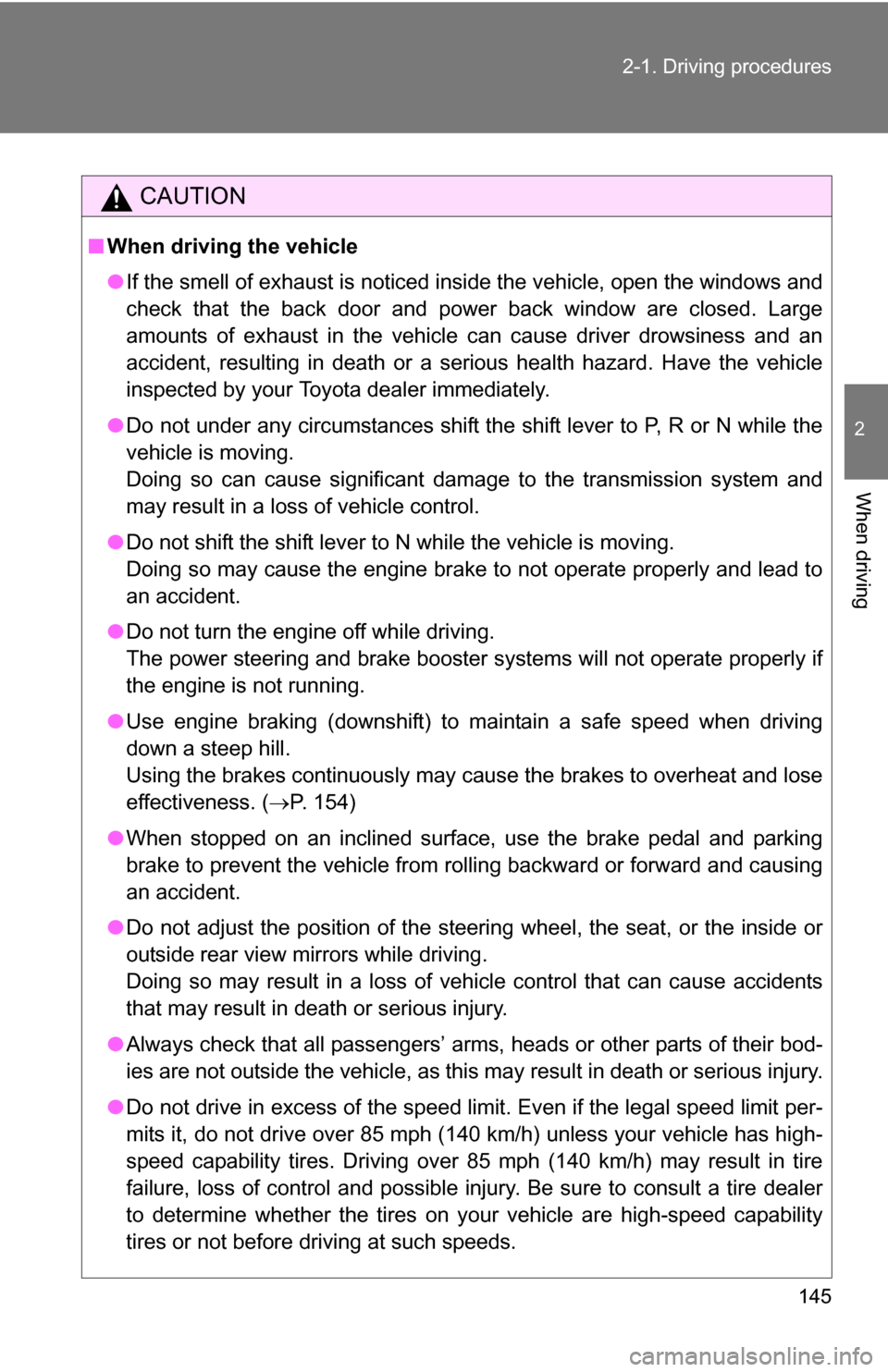power steering TOYOTA SEQUOIA 2009 2.G Owners Manual
[x] Cancel search | Manufacturer: TOYOTA, Model Year: 2009, Model line: SEQUOIA, Model: TOYOTA SEQUOIA 2009 2.GPages: 612
Page 2 of 612

TABLE OF CONTENTSIndex
2
1-1. Key information .................. 32Keys ..................................... 32
1-2. Opening, closing and locking the doors ............. 33
Wireless remote control ....... 33
Side doors ............................ 37
Back door ............................. 42
1-3. Adjustable components (seats, mirrors, steering
wheel) ................................ 47
Front seats ........................... 47
Rear seats ............................ 51
Driving position memory system ................................ 61
Head restraints ..................... 64
Seat belts ............................. 67
Steering wheel (manually adjustable type) .................. 77
Steering wheel (power-adjustable type)...... 78
Anti-glare inside rear view mirror .................................. 79
Outside rear view mirrors ..... 82
Roof luggage carrier............. 86
1-4. Opening and closing the windows and
moon roof ......................... 88
Power windows .................... 88
Power back window ............. 90
Moon roof ............................. 92 1-5. Refueling ............................. 95
Opening the fuel tank cap..... 95
1-6. Theft deterrent system ..... 100 Engine immobilizer system .............................. 100
Alarm .................................. 102
Theft prevention labels (U.S.A.)............................. 104
1-7. Safety information ............ 105 Correct driving posture ....... 105
SRS airbags ....................... 107
Front passenger occupant classification system ......... 120
Child restraint systems ....... 125
Installing child restraints ..... 129
2-1. Driving procedures........... 142 Driving the vehicle .............. 142
Engine (ignition) switch....... 151
Automatic
transmission........ 154
Turn signal lever ................. 158
Parking brake ..................... 159
Horn .................................... 160
2-2. Instrument cluster ............ 161 Gauges and meters ............ 161
Indicators and warning lights ................................. 166
Multi-information display ..... 171
Accessory meter ................. 177
1Before driving
2When driving
Page 23 of 612

23
Instrument panel light
control dial
P. 165
Power back door main
switch
P. 44
: If equipped
Outside rear view
mirror switches
P. 82
Tilt and telescopic steering
lock release lever
P. 77
Personal/interior light
main switch
P. 372
Power back door
switch
P. 43
Headlight cleaner
switch
P. 187
RSCA OFF switch
P. 119
Tilt and telescopic steering
control switch
P. 78
REVERSE TILT
switch
P. 83
Page 31 of 612

Before driving1
31
1-1. Key information................ 32Keys ................................... 32
1-2. Opening, closing and locking the doors ........... 33
Wireless remote control ..... 33
Side doors .......................... 37
Back door ........................... 42
1-3. Adjustable components (seats, mirrors, steering
wheel).............................. 47
Front seats ......................... 47
Rear seats.......................... 51
Driving position memory system ............................. 61
Head restraints................... 64
Seat belts ........................... 67
Steering wheel (manually adjustable type) ............... 77
Steering wheel (power-adjustable type) ... 78
Anti-glare inside rear view mirror ............................... 79
Outside rear view mirrors ... 82
Roof luggage carrier .......... 86 1-4. Opening and closing
the windows and
moon roof ....................... 88
Power windows .................. 88
Power back window ........... 90
Moon roof ........................... 92
1-5. Refueling........................... 95 Opening the fuel tank cap ................................... 95
1-6. Theft deterrent system ........................... 100
Engine immobilizer system ........................... 100
Alarm................................ 102
Theft prevention labels (U.S.A.) .......................... 104
1-7. Safety information ......... 105 Correct driving posture..... 105
SRS airbags ..................... 107
Front passenger occupant classification system ...... 120
Child restraint systems..... 125
Installing child restraints ........................ 129
Page 48 of 612

48 1-3. Adjustable components (seats, mirrors, steering wheel)
Power seat
Seat position adjustment switch
Seatback angle adjustment switch
Seat cushion (front) angle adjustment switch
Vertical height adjustment switch
Driver’s seat leg support adjustment switch (if equipped)
Seat lumbar support adjustment switch
Passenger’s seat Driver’s seat
Page 54 of 612

54 1-3. Adjustable components (seats, mirrors, steering wheel)
Moving a second seat for third seat access
■Getting in the vehicle
Pull up the lever and fold down
the seatback. The seat will slide
forward.
Move the seat to the front-most
position
Power seat Seatback angle adjustment
switch
Seatback folding/returning
switch
Page 59 of 612

59
1-3. Adjustable components (s
eats, mirrors, steering wheel)
1
Before driving
Manual seat (from back door side)
Pull the lever to unlock the seat-
back and then fold the seatback
down.
Power seat (from rear door side) Press and hold the seatback
folding switch until the seatback
folds down fully and the buzzer
sounds.
Power seat (from back door side) Press and hold the seatback
folding switch until the seatback
folds down fully and the buzzer
sounds.
■The power third seat can be folded down/returned when
● The engine switch is off or the shift lever is in P, with the rear door
opened. (from rear door side)
● The engine switch is off or the shift lever is in P, with the back door
opened. (from back door side)
Page 63 of 612

63
1-3. Adjustable components (s
eats, mirrors, steering wheel)
1
Before driving
■Retained accessory power
Each memorized position (except for the tilt and telescopic steering column)
can be activated within 30 seconds after the driver’s door is opened, even if
the key is not in the engine switch.
■ If any position memory button is pushed while the adjustments are
being made
The operation will stop. To reactivate the system, push the button (“1” or “2”)
again.
■ If the battery is disconnected
The memorized positions must be reset because the computer’s memory is
erased when the battery is disconnected.
CAUTION
■Seat adjustment caution
Take care during seat adjustment that the seat does not strike the rear pas-
senger or squeeze your body against the steering wheel.
If this happens, you can stop the movement by pressing another seat posi-
tion memory button.
Page 78 of 612

78
1-3. Adjustable components (seats, mirrors, steering wheel)
Steering wheel (power-adjustable type)
Auto tilt awayWhen the key is removed from
the engine switch, the steering
wheel returns to its stowed posi-
tion by moving up and away to
enable easier driver entry and
exit.
Inserting the key into the engine
switch returns the steering wheel
to its original position.
The steering wheel can be adjusted to a comfortable position.
Up
Down
Toward the driver
Away from the driver
CAUTION
■Caution while driving
Do not adjust the steering wheel while driving.
Doing so may cause the driver to mishandle the vehicle and an accident,
resulting in death or serious injury.
Page 109 of 612

109
1-7. Safety information
1
Before driving
The main SRS airbag system components are shown above. The
SRS airbag system is controlled by
the airbag sensor assembly. The
airbag sensor assembly consists of a safing sensor and an airbag
sensor.
In certain types of severe frontal or side impacts, the SRS airbag sys-
tem triggers the airbag inflators. A chemical reaction in the inflators
quickly fills the airbags with non-toxic gas to help rest rain the motion
of the occupants.
■ SRS warning light
This warning light system monitors the airbag sensor assembly, front airbag
sensors, side and curtain shield airbag sensor assemblies, curtain shield air-
bag sensor assemblies, driver’s seat position sensor, driver’s seat belt
buckle switch, front passenger occupant classification system, AIR BAG ON
and AIR BAG OFF indicator lights, front passenger’s seat belt buckle switch,
front seat belt pretensioner assemblies , RSCA OFF indicator light, inflators,
interconnecting wiring and power sources. ( P. 519)
■ If the SRS airbags deploy (inflate)
●Bruising and slight abrasions may result from contact with a deploying
(inflating) SRS airbag.
● A loud noise and white powder will be emitted.
● Parts of the airbag module (steering wheel hub, airbag cover and inflator)
as well as the front seats, and parts of the front and rear pillars and roof
side rail, may be hot for several minutes. The airbag itself may also be
hot.
● The front windshield may crack.
Page 145 of 612

145
2-1. Driving procedures
2
When driving
CAUTION
■
When driving the vehicle
●If the smell of exhaust is noticed inside the vehicle, open the windows and
check that the back door and power back window are closed. Large
amounts of exhaust in the vehicle can cause driver drowsiness and an
accident, resulting in death or a serious health hazard. Have the vehicle
inspected by your Toyota dealer immediately.
● Do not under any circumstances shift the shift lever to P, R or N while the
vehicle is moving.
Doing so can cause significant damage to the transmission system and
may result in a loss of vehicle control.
● Do not shift the shift lever to N while the vehicle is moving.
Doing so may cause the engine brake to not operate properly and lead to
an accident.
● Do not turn the engine off while driving.
The power steering and brake booster systems will not operate properly if
the engine is not running.
● Use engine braking (downshift) to maintain a safe speed when driving
down a steep hill.
Using the brakes continuously may cause the brakes to overheat and lose
effectiveness. ( P. 154)
● When stopped on an inclined surface, use the brake pedal and parking
brake to prevent the vehicle from rolling backward or forward and causing
an accident.
● Do not adjust the position of the steering wheel, the seat, or the inside or
outside rear view mirrors while driving.
Doing so may result in a loss of vehicle control that can cause accidents
that may result in death or serious injury.
● Always check that all passengers’ arms, heads or other parts of their bod-
ies are not outside the vehicle, as this may result in death or serious injury.
● Do not drive in excess of the speed limit. Even if the legal speed limit per-
mits it, do not drive over 85 mph (140 km/h) unless your vehicle has high-
speed capability tires. Driving over 85 mph (140 km/h) may result in tire
failure, loss of control and possible injury. Be sure to consult a tire dealer
to determine whether the tires on your vehicle are high-speed capability
tires or not before driving at such speeds.